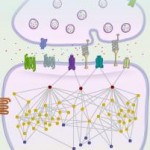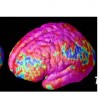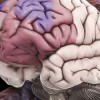New Technique may Unravel Secrets of Biochemistry
 A new paper from David Kleinfeld’s Laboratory at UC San Diego details an exciting new technique for studying biochemistry in the brain. The paper, published in the journal Nature Neuroscience, outlines a novel method for studying cell-to-cell signals that are the basis of neurotransmission. It has significant potential for uncovering the mechanisms by which many psychiatric drugs work.
A new paper from David Kleinfeld’s Laboratory at UC San Diego details an exciting new technique for studying biochemistry in the brain. The paper, published in the journal Nature Neuroscience, outlines a novel method for studying cell-to-cell signals that are the basis of neurotransmission. It has significant potential for uncovering the mechanisms by which many psychiatric drugs work.
What did the group find?
Kleinfeld’s group devised a technique that uses elaborately-named “cell-based neurotransmitter fluorescent engineered reporters” (CNiFERs for short) to examine how neurotransmitter receptors are activated. CNiFERs are cells that have been engineered to change color when acted upon by a specific neurotransmitter. The group created CNiFERs that responded to acetylcholine and implanted these cells into the frontal cortex of adult rats. When stimulated, the CNiFERs fluoresced to indicate the presence of acetylcholine in the frontal cortex.
Next, the group injected the rats with clozapine and olanzapine – neuroleptic drugs (antipsychotics) that are often used to treat schizophrenia. The implanted cells ceased to fluoresce, indicating that the drugs were blocking the transmission of acetylcholine. In other words, the group could see how neuroleptics were affecting the frontal cortex simply by looking at its color!
Why is this important?
This is very exciting and potentially very important. It is theoretically possible to create CNiFERs that respond to any neurotransmitter and to implant cells in any part of the brain. The mechanisms by which many psychiatric drugs work is largely a mystery, with selective serotonin reuptake inhibitors (SSRIs, used to treat depressions) being a case in point. With CNiFERs, researchers have a potentially powerful tool to understand how biochemical signals are relayed through the brain and the sites where they are active. This may lead to more effective treatments for disorders and lay bare many of the secrets of biochemistry that have been hidden for so long.
| Print article | This entry was posted by connolly on January 11, 2010 at 11:48 pm, and is filed under G2C Online. Follow any responses to this post through RSS 2.0. You can skip to the end and leave a response. Pinging is currently not allowed. |









